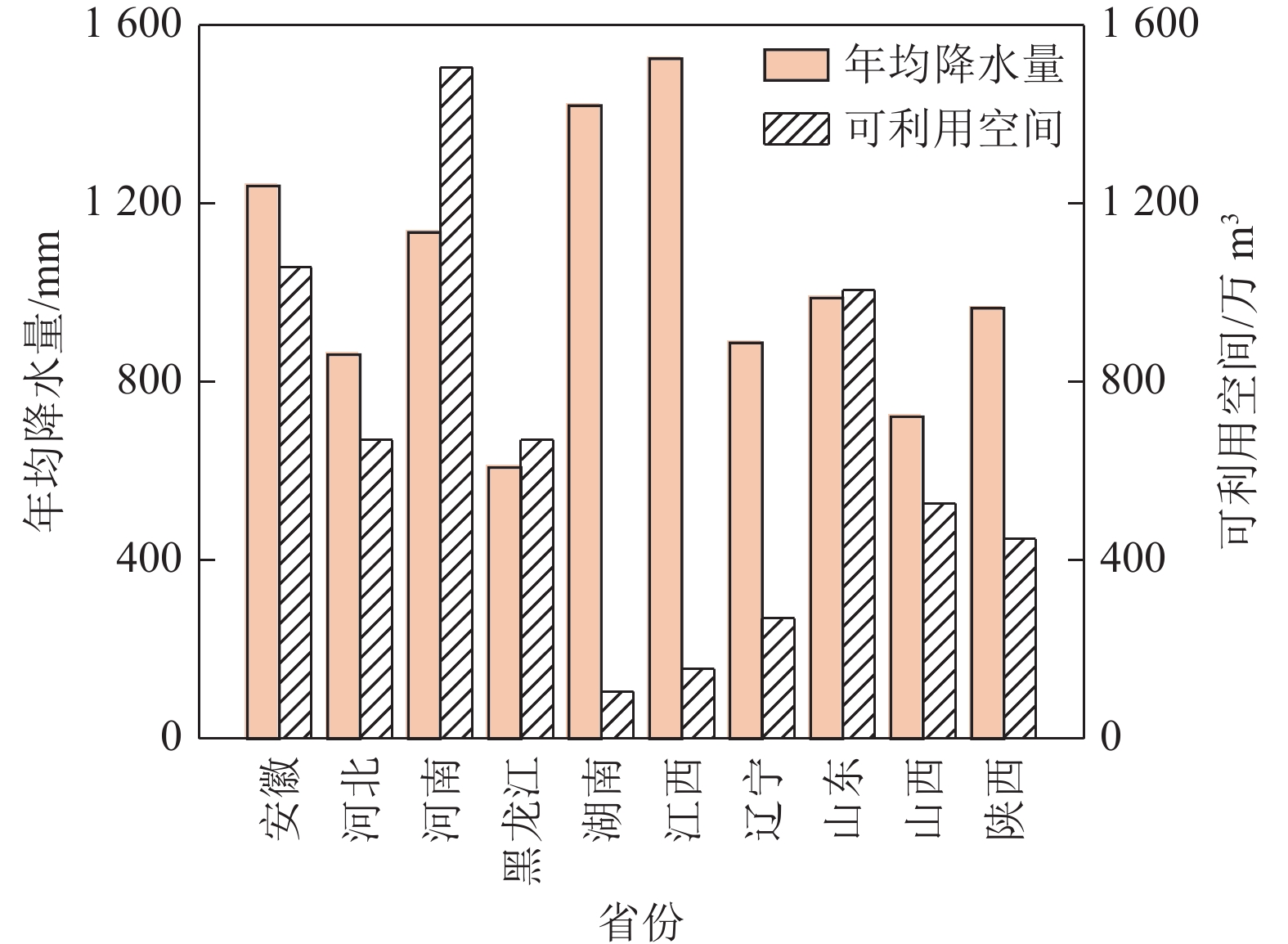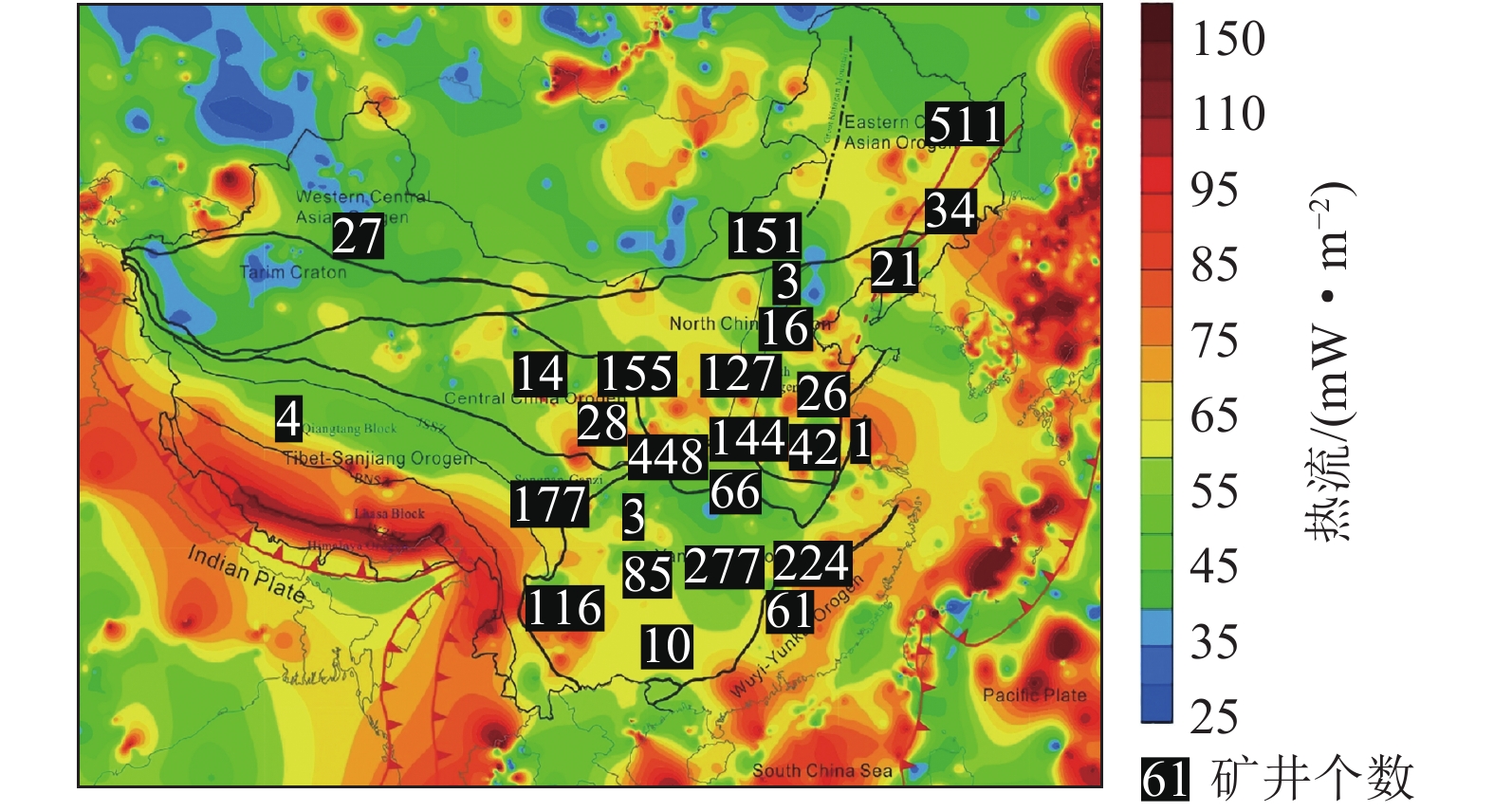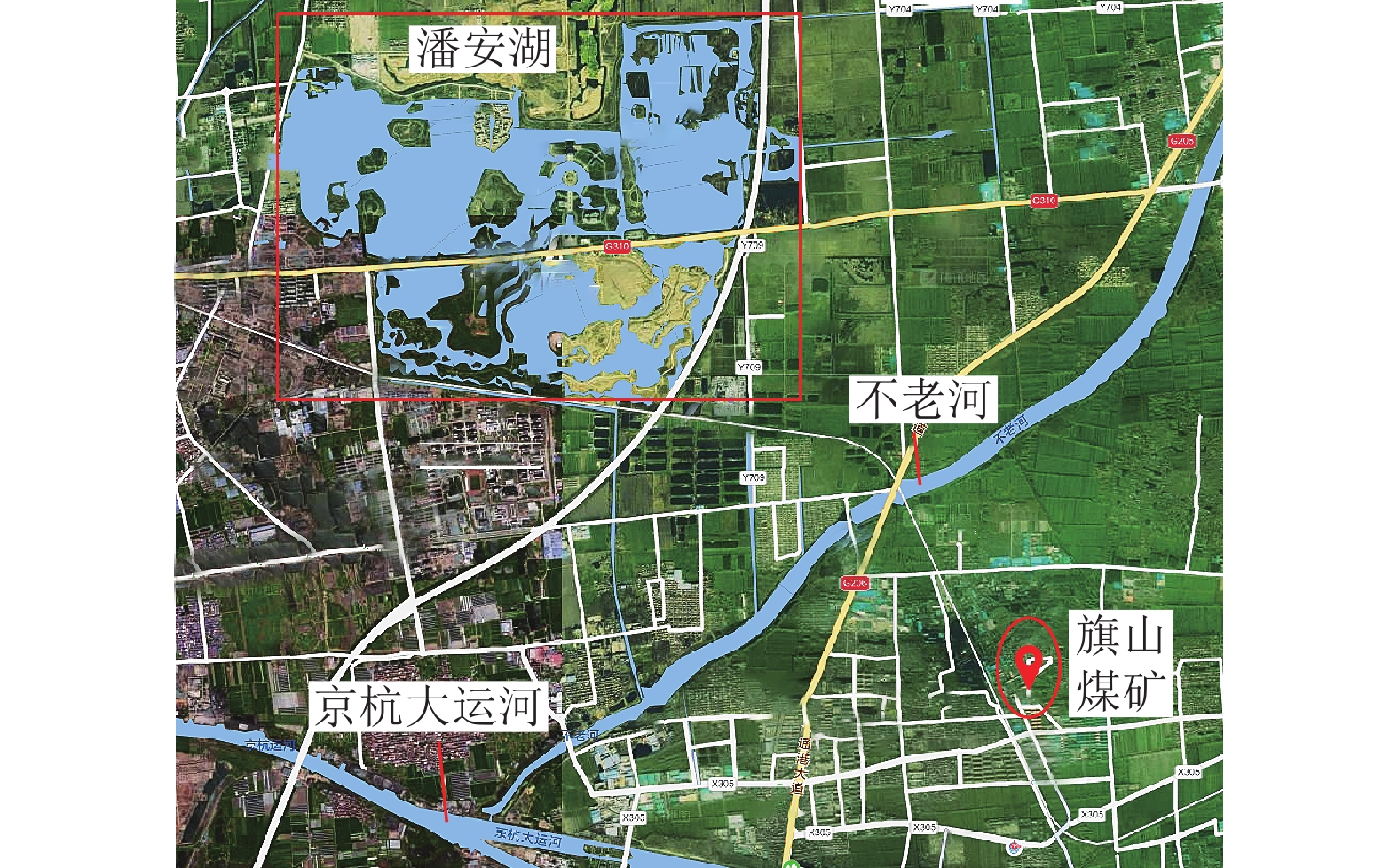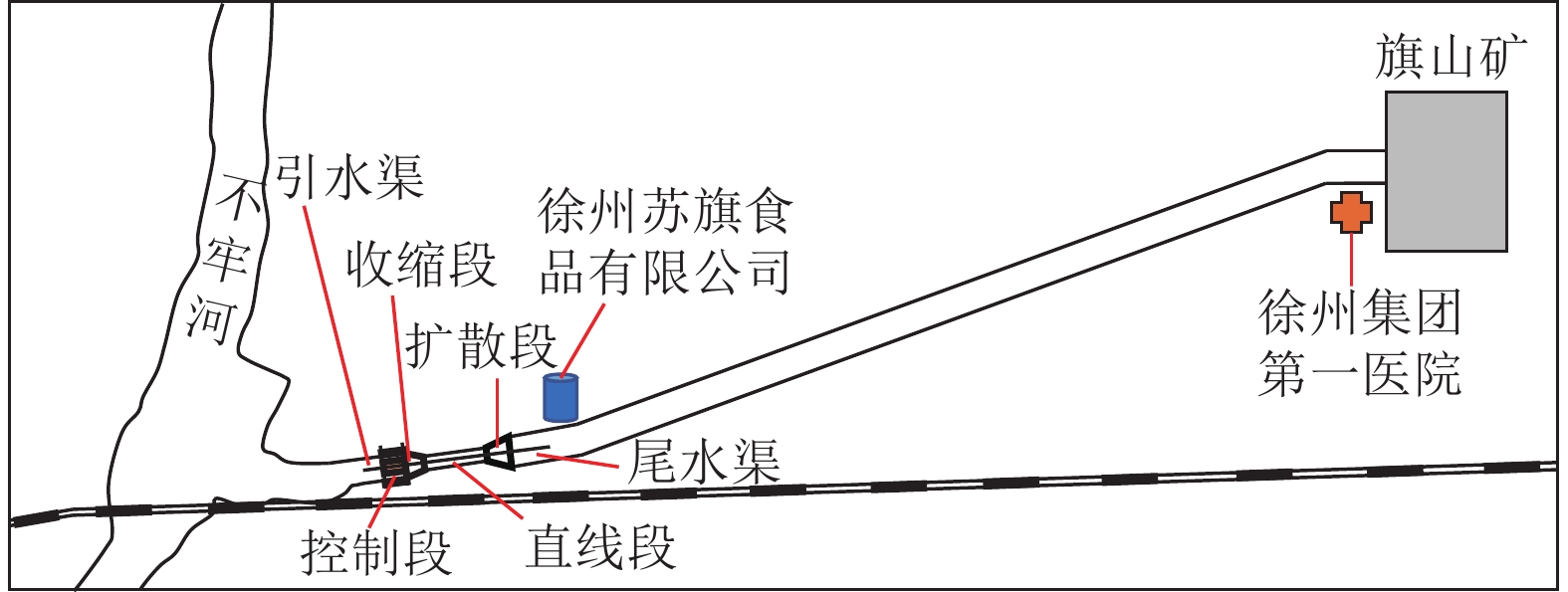Energy storage via storing flood in abandoned mines and low temperature heat energy utilization from mine water
-
摘要:
废弃矿井地下空间利用是煤炭行业重点支持的方向。将地下空间利用、汛期蓄洪和冬季供热相结合,提出了基于地面引水蓄洪、井下蓄水储能和热泵取热技术的废弃矿井蓄洪储能与取热综合利用模式,阐述了该模式的概念、关键技术和科学问题;分析了我国废弃矿井分布及其与降水量分布之间的关系,论证了废弃矿井地下空间的蓄洪储能潜力。研究发现,安徽、河南、山东等13个省份的废弃矿井地下空间近6 000万m3,可储存约6个西湖的水量,适宜开展废弃矿井地下蓄洪储能和取热的工程示范。其中,仅淮南矿区5个废弃矿井的地下空间资源高达30万m3,储能量达94 500 GJ,可满足21万m2的建筑供暖需求。以旗山矿为例,设计了地面引水沟渠布置、井下储水空间布置以及矿井水提取和利用等方案,初步测算旗山矿蓄洪储能方案的供热功率可达6 835 kW,可为13.67万m2的建筑供暖,减少二氧化碳排放量约5 330 t,经济效益达350.75万元,初步论证了废弃矿井地下空间蓄洪储能的可行性。废弃矿井蓄洪储能与取热综合利用模式既可有效利用废弃矿井地下空间,还可以缓解汛期的局部洪涝灾害,并开发矿井水中的低品位清洁热能,对提高废弃矿井地下空间利用的附加值和推进废弃矿井地下空间利用有一定意义。
Abstract:The utilization of underground space in abandoned mines is a key direction supported by the coal industry. By combining underground space utilization, flood storage, and heat supply in winter, this paper proposes a comprehensive utilization model of flood storage and heat extraction in the abandoned mine, based on three technologies: ground flood diversion, underground flood storage and heat pump. This paper addresses the concept, key technologies and scientific issues of the model. The distribution of abandoned mines in China and its relationship with precipitation distribution were analyzed. The potential for flood and energy storage in abandoned mine was also studied. Results showed that 13 provinces, including Anhui, Henan, and Shandong province, can utilize approximately 60 million cubic meters of underground space and store nearly 6 volumes of West Lake water, making it suitable for engineering demonstration of flood storage and heat extraction in abandoned mines. Among them, five abandoned mines in Huainan mining area can utilize approximately 300 000 cubic meters of underground space, with energy storage capacity of up to 94 500 GJ that can meet the heating demand of 210 000 square meters. Taking Qishan Mine as an example, a scheme was designed based on ground flood diversion and storage, underground water storage, and mine water extraction and utilization. According to preliminary calculations, the heating power of Qishan Mine can reach 6 835 kW which can provide heating for 136 700 square meters of buildings, reduce carbon dioxide emissions by about 5 330 tons, and save 3.507 5 million yuan. This demonstrates the feasibility of flood and energy storage in abandoned underground space. Research showed that the comprehensive utilization model of flood storage, energy storage, and heat extraction in abandoned mines can not only effectively utilize the underground space of abandoned mines but also alleviate local flood disasters during the flood season. It can develop low-grade clean energy in mine water and has certain significance in improving the added value of underground space utilization in abandoned mines and promoting the utilization of underground space in abandoned mines.
-
Keywords:
- abandoned mine /
- flood storage /
- energy storage /
- geothermal energy /
- heating
-
-
表 1 安徽部分矿井开采深度与地温
Table 1 Mining depth and ground temperature of some mines in Anhui Province
矿井 采深/m 最高岩温/℃ 备注 张集矿 1260 51.5 生产 顾桥矿 996 43.8 生产 潘三矿 962 54.8 生产 丁集矿 1075 52.7 生产 谢桥矿 720 41.1 生产 刘庄矿 900 45.2 生产 潘一东矿 1040 46.1 废弃 新庄孜煤矿 870 40.7 废弃 新集三矿 700 36.3 废弃 李嘴孜煤矿 548 36.8 废弃 谢家集一矿 660 39.7 废弃 表 2 矿井水源热泵机组运行效益对比
Table 2 Operating benefits comparison of mine water source heat pump units
序号 项目 金额/万元 备注 蒸汽 热泵 1 折旧费用 0 25.95 总投资的3% 2 维修费用 1.8 9.6 总投资的1% 3 工人工资 9.6 9.6 4人,每人每月
2000元4 电费 24.5 170 — 5 蒸汽费用 506 0 — 6 碳交易收益 0 −24.0 热泵为碳减排 累计 541.9 191.15 -
[1] 袁 亮,姜耀东,王 凯,等. 我国关闭/废弃矿井资源精准开发利用的科学思考[J]. 煤炭学报,2018,43(1):14−20. YUAN Liang,JIANG Yaodong,WANG Kai,et al. Precision exploitation and utilization of closed / abandoned mine resources in China[J]. Journal of China Coal Society,2018,43(1):14−20.
[2] 孟召平,李国富,田永东,等. 晋城矿区废弃矿井采空区煤层气地面抽采研究进展[J]. 煤炭科学技术,2022,50(1):204−211. MENG Zhaoping,LI Guofu,TIAN Yongdong,et al. Research progress on surface drainage of coalbed methanein abandoned mine gobs of Jincheng mining area[J]. Coal Science and Technology,2022,50(1):204−211.
[3] 谢和平,高明忠,高 峰,等. 关停矿井转型升级战略构想与关键技术[J]. 煤炭学报,2017,42(6):1355−1365. XIE Ping,GAO Mingzhong,GAO Feng,et al. The strategic concept and key technologies of the transformation and upgrading of the closed mine[J]. Journal of China Coal Society,2017,42(6):1355−1365.
[4] 武 俐,曹 斌,李怀珍,等. ASE萃取对低、中阶煤增产生物气的研究[J]. 煤炭科学技术,2022,50(2):334−340. WU Li,CAO Bin,LI Huaizhen,et al. Study on biogas production of low and medium rank coals by ASE extraction[J]. Coal Science and Technology,2022,50(2):334−340.
[5] 刘 峰,李树志. 我国转型煤矿井下空间资源开发利用新方向探讨[J]. 煤炭学报,2017,49(9):2205−2213. Liu Feng,Li Shuzhi. The new direction of development and utilization of underground space resources in transition coal mines in China[J]. Journal of China Coal Society,2017,49(9):2205−2213.
[6] 谢友泉,高 辉,苏志国. 废弃矿井地热资源的开发利用[J]. 太阳能,2020(10):6. XIE Youquan,GAO Hui,SU Zhiguo,et al. Development and utilization of geothermal resources in abandoned mines[J]. Solar energy,2020(10):6.
[7] GUO P,ZHENG L,SUN X,et al. Sustainability evaluation model of geothermal resources in abandoned coal mine[J]. Applied Thermal Engineering,2018,144:804−811. doi: 10.1016/j.applthermaleng.2018.06.070
[8] DÍEZ R R,DÍAZ-AGUADO M B. Estimating limits for the geothermal energy potential of abandoned underground coal mines: A simple methodology[J]. Energies,2014,7(7):4241−4260. doi: 10.3390/en7074241
[9] 赵东亮,李 勇,代彦军. 季节性蓄热太阳能集中供热系统[J]. 太阳能,2011(3):26−31. Zhao Dongliang,Li Yong,Dai Yanjun. Seasonal regenerative solar central heating system[J]. Solar Energy,2011(3):26−31.
[10] MICHAL Vokurka, ANTONÍN Kunz. Case Study of Using the Geothermal Potential of MineWater for Central District Heating—The Rožná Deposit, Czech Republic[J]. Sustainability, 2022, 14: 2016.https://doi.org/10.3390/ su14042016.
[11] 吴金焱. 荷兰海尔伦市废弃煤矿矿井水地热能开发利用工程实践[J]. 中国煤炭,2020,46(1):94−98. WU Jinyan. Practice on geothermal energy development and utilization from abandoned coal mine water in Heerlen of Netherlands[J]. China Coal,2020,46(1):94−98.
[12] 殷方圆,殷淑燕. 1960-2012年我国夏季降水的时空分布特征[J]. 陕西师范大学学报(自科版),2015(3):80−85. YIN Fangyuan,YIN Shuyan. Temporal and spatial distribution characteristics of summer precipitation in China from 1960 to 2012[J]. Journal of Shaanxi Normal University (self-edition),2015(3):80−85.
[13] 曹思沁. 我国现代降水时频分布特征分析与预测综述[J]. 科技展望,2016,26(36):275. CAO Siqin. Analysis and prediction of time-frequency distribution characteristics of modern precipitation in China[J]. Technology prospect,2016,26(36):275.
[14] 谢和平,高明忠,刘见中,等. 煤矿地下空间容量估算及开发利用研究[J]. 煤炭学报,2018,43(6):1484−1503. XIE Heping,GAO Mingzhong,LIU Jianzhong,et al. Research on capacity estimation and development and utilization of underground space in coal mines[J]. Journal of China Coal Society,2018,43(6):1484−1503.
[15] 吴燕娟. 气候变化背景下我国极端降水的时空分布特征和未来预估[D]. 上海: 上海师范大学, 2016. WU Yanjuan Spatial and temporal distribution characteristics and future projections of extreme precipitation in China under the background of climate change [D]. Shanghai: Shanghai Normal University, 2016.
[16] 王莉萍,王维国,张建忠. 我国主要流域降水过程时空分布特征分析[J]. 自然灾害学报,2018,27(2):161−173. WANG Liping,WANG Weiguo,ZHANG Jianzhong. The spatial and temporal distribution characteristics of precipitation processes in major basins in China[J]. Journal of Natural Disasters,2018,27(2):161−173.
[17] 张霖琳,张珺琳,刘道会,等. 蒙洼泄洪区补偿机制存在的问题与对策分析:基于安徽阜南蒙洼泄洪区的典型案例调查[J]. 产业与科技论坛,2010,9(11):132−134. ZHANG Linlin,ZHANG Junlin,LIU Daohui,et al. Mengwa flood discharge area compensation mechanism problems and countermeasures analysis - Based on the typical case investigation of Funan Mengwa flood discharge area[J]. Industry and Technology Forum,2010,9(11):132−134.
[18] 蔡 敏. 安徽省将投入11亿元积极推进中小河流治理进程[EB/OL]. (2009-11-29)[2022-03-08]. https://www.gov.cn/jrzg/2009-11/29/content_1475872.htm. [19] ZHANG Yuan,WAN Zhi-jun,GU Bin,ZHOU Chang-bing,CHENG Jing-yi. Unsteady temperature field of surrounding rock mass in high geothermal roadway during mechanical ventilation[J]. J. Cent. South Univ.,2017,24(2):374−381. doi: 10.1007/s11771-017-3439-3
[20] 万志军,毕世科,张 源,等. 煤-热共采的理论与技术框架[J]. 煤炭学报,2018,43(8):2099−2106. WAN Zhijun,BI Shike,ZHANG Yuan,et al. Theoretical and technical framework of coal-thermal co-mining[J]. Coal Journal,2018,43(8):2099−2106.
[21] JIANG G,HU S,SHI Y,et al. Terrestrial heat flow of continental China: Updated dataset and tectonic implications[J]. Tectonophysics,2019,753:36−48. doi: 10.1016/j.tecto.2019.01.006
[22] 胡 平,刘 毅,唐忠敏,等. 水库水温数值预测方法[J]. 水利学报,2010,41(9):1045−1053. HU Ping,LIU Yi,TANG Zhongmin,et al. Numerical prediction of water temperature in reservoir[J]. Shuili Xuebao,2010,41(9):1045−1053.
[23] 鲍其钢,乔光建. 水库水温分层对农业灌溉影响机理分析[J]. 南水北调与水利科技,2011,9(2):69−72. BAO Qigang,QIAO Guangjian. Impacts of Reservoir Water Temperature Stratification on Agricultural Irrigation[J]. South-to-North Water Diversion and Water Science & Technology,2011,9(2):69−72.
[24] 吴基文,王广涛,翟晓荣,等. 淮南矿区地热地质特征与地热资源评价[J]. 煤炭学报,2019,44(8):2566−2578. WU Jiwen,WANG Guangtao,ZHAI Xiaorong,et al. Geothermal geological characteristics and geothermal resources evaluation of Huainan mining area[J]. Journal of China Coal Society,2019,44(8):2566−2578.




 下载:
下载:





